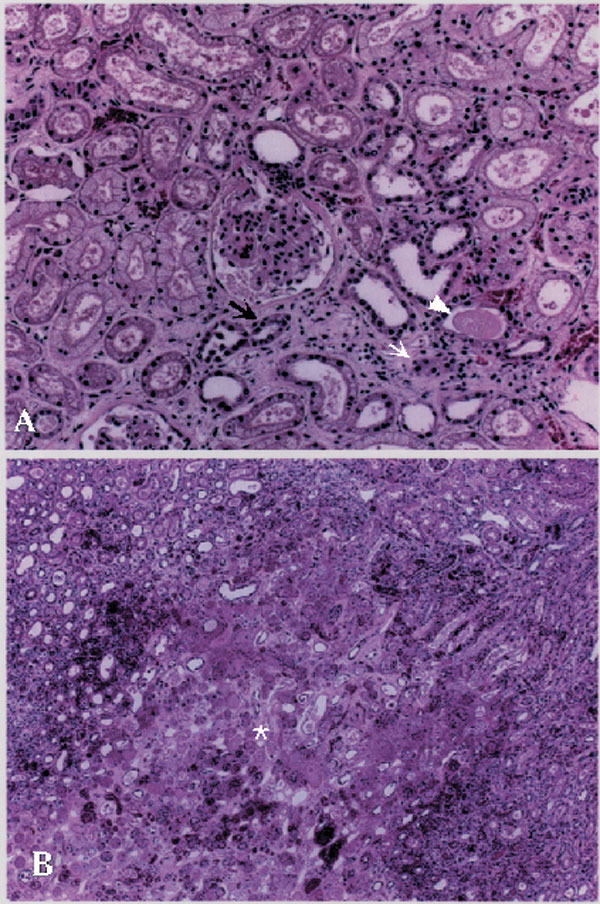Volume 8, Number 8—August 2002
Research
Genetic Characterization of Hantaviruses Transmitted by the Korean Field Mouse (Apodemus peninsulae), Far East Russia
Figure 1

Figure 1. Histopathologic changes in kidney tissue from a patient with hemorrhagic fever with renal syndrome, Primorye region. Changes include interstitial edema with mild infiltration of mononuclear cells (small arrow) and degeneration of renal tubules (large arrow) in cortex. Proteinaceous casts and exudate (arrowhead) are seen in lumina of renal tubules (A). No apparent glomerular changes. Most prominent change in the medulla is well–defined necrotic lesion (asterisk) (B).
Page created: July 16, 2010
Page updated: July 16, 2010
Page reviewed: July 16, 2010
The conclusions, findings, and opinions expressed by authors contributing to this journal do not necessarily reflect the official position of the U.S. Department of Health and Human Services, the Public Health Service, the Centers for Disease Control and Prevention, or the authors' affiliated institutions. Use of trade names is for identification only and does not imply endorsement by any of the groups named above.